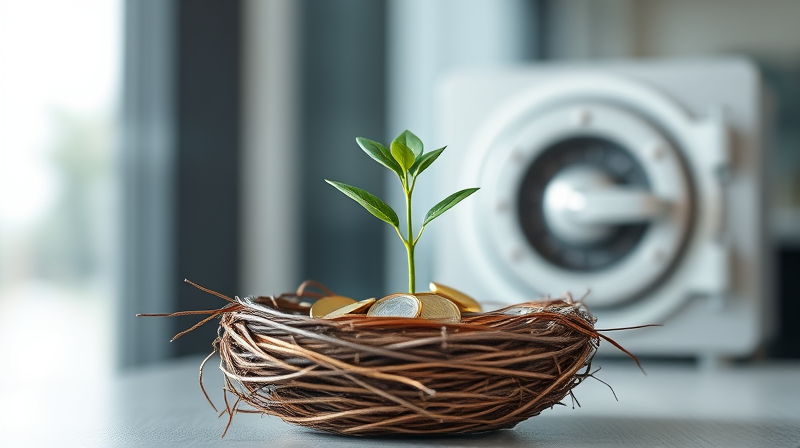In today’s uncertain economic climate, establishing a financial safety net is more crucial than ever. With recent statistics showing that only 44% of Americans could cover a $1,000 emergency, building an emergency fund is not just a goal but a necessity. This guide aims to inspire you to take control of your finances and create a solid foundation to safeguard against unexpected expenses.
Many individuals find themselves one unforeseen event away from a financial crisis. Whether it is a sudden medical expense, a job loss, or urgent home repairs, being unprepared can lead to stressful situations and high-interest debt. By taking a systematic approach to saving, you can build a reserve that will help you avoid these pitfalls and provide a sense of security for the future.
Setting Clear Goals
The first step toward building an emergency fund is to define clear, achievable goals. Identifying how much money you need to keep afloat during unexpected situations is essential. Start by calculating your basic expenses such as rent, utilities, groceries, insurance, and debt payments. Financial experts suggest having enough savings to cover three to six months of expenses.
If this number seems daunting, start small. Consider saving a modest amount, such as $500 or $1,000, as an initial target. These smaller milestones will build your momentum and set you on the path to reaching a more substantial reserve.
Creating a Realistic Budget
One of the keys to growing your emergency fund is to create a budget that reflects your financial reality. Begin by tracking your monthly income and expenses. Identify non-essential spending and areas where you can cut back to reallocate funds toward your savings goal.
Consider adopting these practical tips to maximize your budget:
- Reduce dining out: Cooking at home can result in significant savings each month.
- Cancel unused subscriptions: Evaluate recurring services and memberships which you might not fully utilize.
- Limit impulse purchases: Implement a 24-hour rule to ensure that every purchase is carefully considered.
By making these simple adjustments, you may be able to free up more money that can be redirected into your emergency fund.
Setting Up Your Emergency Fund
Once you’ve established your target savings goal and adjusted your spending habits, the next step is to set up a dedicated account for your emergency fund. It is important to distinguish this account from your everyday spending funds, ensuring that the money is safe and accessible when needed.
When setting up your fund, consider the following tips:
- Choose the right account: Opt for a basic savings account or money market account that is linked to your checking for easy transfers.
- Seek high yields: Look for accounts offering competitive interest rates to help your savings grow faster over time.
- Ensure liquidity: While it is important for the funds to be accessible in an emergency, keeping them separate can prevent unnecessary spending.
Making Saving Automatic
One of the most effective ways to ensure that your savings continue to grow is to automate your contributions. By setting up automatic transfers from your checking account to your dedicated emergency fund, you create a system that consistently builds your reserve without requiring regular manual effort.
Choose a schedule that aligns with your payday—whether that is weekly, bi-weekly, or monthly. This strategy not only simplifies the process but also reinforces a habit of saving, ensuring that you are paying yourself first before other expenses take priority.
Exploring Additional Income Sources
Sometimes, cutting expenses isn’t enough to accelerate your savings plan. It may be helpful to seek additional income sources that can boost your emergency fund even further. There are numerous opportunities available today to create extra cash flow.
Consider these ideas:
- Explore side hustles: Freelancing, part-time jobs, or opportunities in the gig economy can add to your income stream.
- Sell unused items: Declutter your home and sell items you no longer need to generate extra cash.
- Allocate windfalls: Redirect tax refunds, bonuses, or unexpected gifts directly into your savings.
By supplementing your income, you make it significantly easier to reach your emergency fund goals faster and create a more robust financial cushion.
Tracking Progress and Staying Motivated
Building an emergency fund is a journey with many milestones along the way. It is important to track your progress regularly, as seeing your savings grow can provide much-needed motivation. Every dollar saved is another step towards achieving peace of mind and financial security.
Celebrate the little victories, whether it’s hitting your first $500 or $1,000 mark, and use these achievements as fuel to keep pushing forward. Consistency is key; even modest, regular contributions can add up over time, leading to a substantial safety net that will serve you for years to come.
Remember, the goal of building an emergency fund is not just about having a reserve of cash; it is about cultivating financial resilience. By planning ahead and taking deliberate steps, you empower yourself to handle life's uncertainties with confidence and grace.
In conclusion, whether you are just starting your financial journey or looking to solidify your savings strategy, the process of building an emergency fund is foundational. With clear goals, practical budgeting, automated savings, and a proactive approach to supplementing your income, you are well on your way to a more stable financial future. Let this guide be your stepping stone toward a secure and inspired life, free from the worry of unexpected setbacks.








